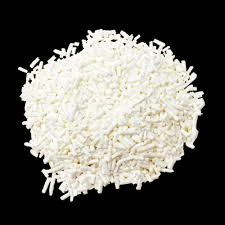
sodium benzoate health
Health Considerations of Sodium Benzoate
Sodium benzoate is a widely used preservative, traditionally known for its effectiveness in preventing microbial growth in food and beverages. Its chemical formula is C7H5NaO2, and it is the sodium salt of benzoic acid. While it plays a crucial role in food preservation, its safety and health implications have been a topic of debate among consumers and health professionals alike.
Uses in Food Preservation
Sodium benzoate is commonly found in acidic foods and beverages, including fruit juices, carbonated drinks, pickles, and sauces. It works by inhibiting the growth of molds, yeast, and some bacteria, extending the shelf life of these products. The United States Food and Drug Administration (FDA) has classified sodium benzoate as “generally recognized as safe” (GRAS) when used within specified limits, typically up to 0.1% of the total weight of the food product.
Health Concerns
Despite its regulatory approval, there are growing concerns about the health effects of sodium benzoate, particularly in combination with other substances. One of the primary areas of concern is its potential to form benzene, a known carcinogen. This occurs when sodium benzoate is exposed to high levels of heat and light in the presence of ascorbic acid (vitamin C), which is often used as a flavor enhancer or preservative in many soft drinks. Studies have shown that this combination can lead to the formation of benzene in certain conditions, raising alarms about the long-term effects of consuming products that contain both additives.
Further research has also indicated that sodium benzoate may affect the health of children. Some studies have linked the preservative to increased hyperactivity in children, particularly when consumed in large amounts. The results of these studies have led to heightened scrutiny over its use in products marketed to children, who often consume sweetened beverages and processed snacks containing sodium benzoate.
sodium benzoate health

Allergic Reactions and Sensitivities
Though sodium benzoate is generally regarded as safe, some individuals may experience allergic reactions or sensitivities to it. Symptoms may include skin rashes, asthma attacks, or other respiratory issues. For people with these sensitivities, avoiding foods and beverages containing sodium benzoate is essential. It is also worth noting that individuals with certain metabolic disorders, such as benzene metabolism disorders, should be particularly cautious about their intake.
Regulatory Overview
Globally, the standards for the use of sodium benzoate vary by country. While it is approved in many regions, some countries have more stringent regulations regarding its concentration in food products. Consumers should be aware of these guidelines and make informed choices about what they eat. Reading food labels and understanding ingredient lists can empower individuals to avoid additives they wish to exclude from their diet.
Conclusion
In conclusion, sodium benzoate serves as an effective and widely utilized preservative in the food industry, contributing to food safety and shelf life extension. However, the health debates surrounding its use cannot be ignored. With potential risks like the formation of benzene and its effects on hyperactivity in children, consumers are encouraged to stay informed and cautious.
Moderation is key; while occasional consumption of products containing sodium benzoate may not pose significant health risks for most people, habitual intake—especially from beverages and snacks targeted at children—should be carefully monitored. As research continues, it will be essential for regulatory bodies, manufacturers, and consumers to remain vigilant in ensuring food safety while also prioritizing public health. Ultimately, being an informed consumer can help mitigate potential health risks associated with sodium benzoate, allowing for a balanced approach to diet and nutrition in today's processed food landscape.
-
Pure Sodium Dichloroisocyanurate Dihydrate | Powerful DisinfectantNewsAug.29,2025
-
Industrial Chemicals: Quality & Purity for Every IndustryNewsAug.28,2025
-
Nitrile Rubber Honoring Strict Production StandardsNewsAug.22,2025
-
Aspartame Ingredients Honoring Food Safety ValuesNewsAug.22,2025
-
Fertilizer for Balanced Plant NutritionNewsAug.22,2025
-
Cyanide Gold Processing with High Purity AdditivesNewsAug.22,2025
-
Formic Acid in Textile Dyeing ApplicationsNewsAug.22,2025
Hebei Tenger Chemical Technology Co., Ltd. focuses on the chemical industry and is committed to the export service of chemical raw materials.
-

view more DiethanolisopropanolamineIn the ever-growing field of chemical solutions, diethanolisopropanolamine (DEIPA) stands out as a versatile and important compound. Due to its unique chemical structure and properties, DEIPA is of interest to various industries including construction, personal care, and agriculture. -

view more TriisopropanolamineTriisopropanolamine (TIPA) alkanol amine substance, is a kind of alcohol amine compound with amino and alcohol hydroxyl, and because of its molecules contains both amino and hydroxyl. -

view more Tetramethyl Thiuram DisulfideTetramethyl thiuram disulfide, also known as TMTD, is a white to light-yellow powder with a distinct sulfur-like odor. It is soluble in organic solvents such as benzene, acetone, and ethyl acetate, making it highly versatile for use in different formulations. TMTD is known for its excellent vulcanization acceleration properties, which makes it a key ingredient in the production of rubber products. Additionally, it acts as an effective fungicide and bactericide, making it valuable in agricultural applications. Its high purity and stability ensure consistent performance, making it a preferred choice for manufacturers across various industries.





